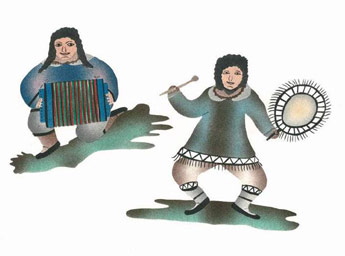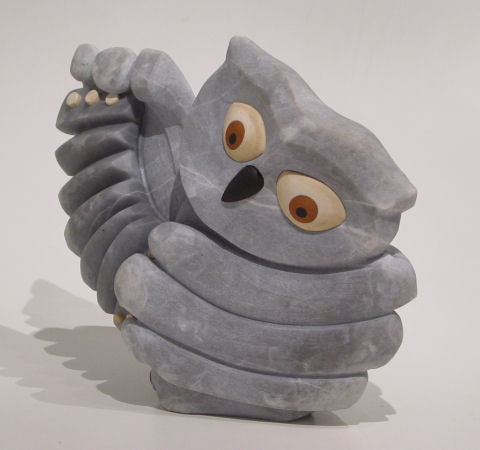There are more than 25,000 Inuit living in Northern Canada, in Nunavut, the Northwest Territories, and Nunuvik in Northern Quebec. Inuit music was primarily based on drumming and throat singing but after contact with European and American whalers, the music has included fiddles and accordions. In the 1800's, Scottish and American whalers hunting blowhead whales traded their tunes, dances, and instruments with the native Inuit and the musical traditions were passed down through the families. They danced squares, round dances, polkas, and waltzes to the sound of the accordion. Dorothy Harley Eber, in her book "When the Whalers Were up North" tells the story of Inuit whale hunters leaving up to 30 of their accordions in a shed for safekeeping while they went hunting. They would choose several from the pile when they came back to play for a dance then leave them back in the shed for the next group.
Simeonie Keenainak
In an article published in the Bulletin de musique folklorique canadienne 34.1/2 (2000) called "Inuit Accordion Music-A Better Kept Secret", Jim Hiscott lists some of the great Inuit accordion players. They include:
Kaina Nowdluk and his brother in Iqaluit. They come from a musical family and their mother played accordion.
Edward May in Kuujjuaq
Andrew Atagotaaluuk’s sons in Inukjuak
Simeonie Keenainak from Pangnirtung north on Baffin Island (retired RCMP).
Elisapi Kasarnak from Pond Inlet
Qarpik Pudlat from Cape Dorset
Zebedee and Jeannie Nungak from Kangirsuk in Nunavik.









